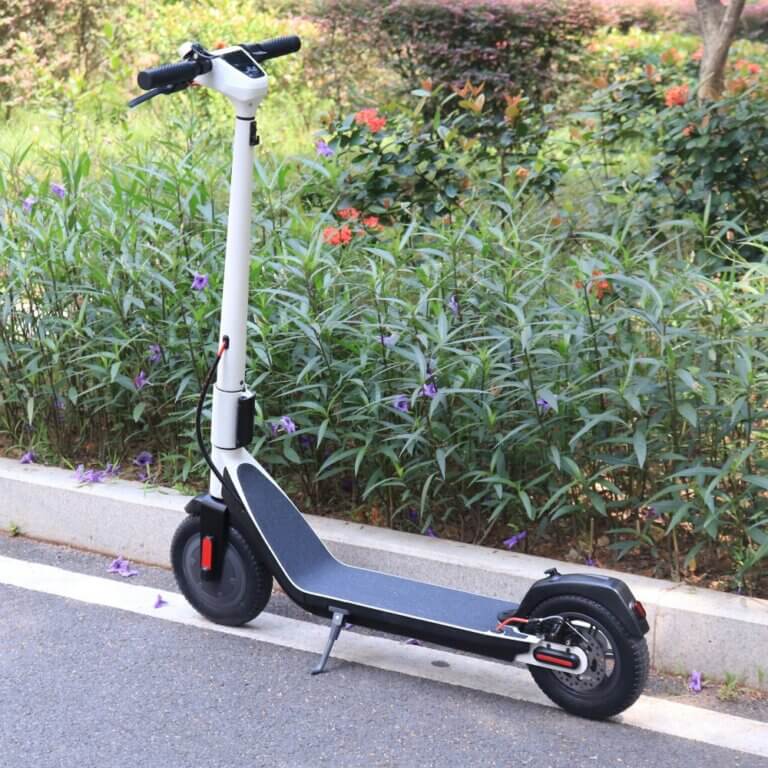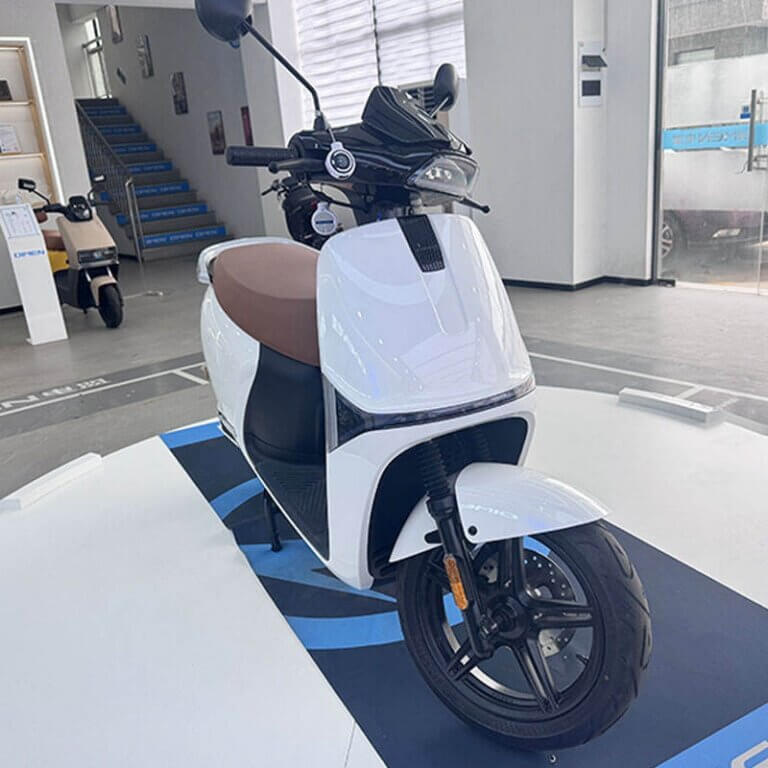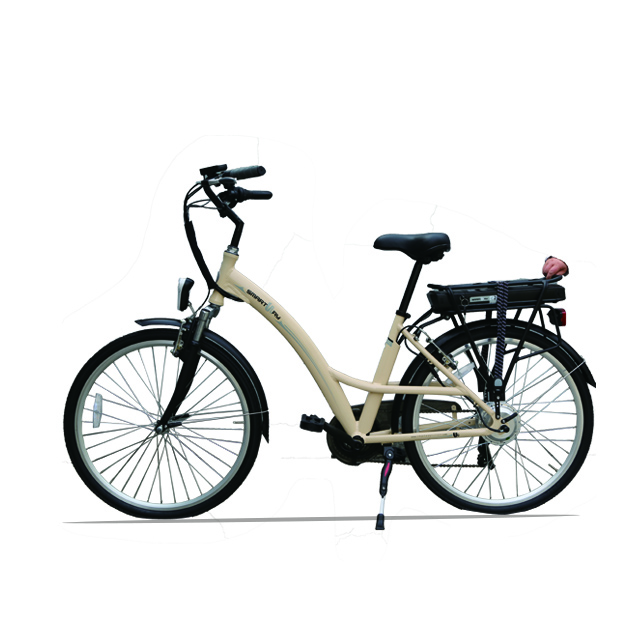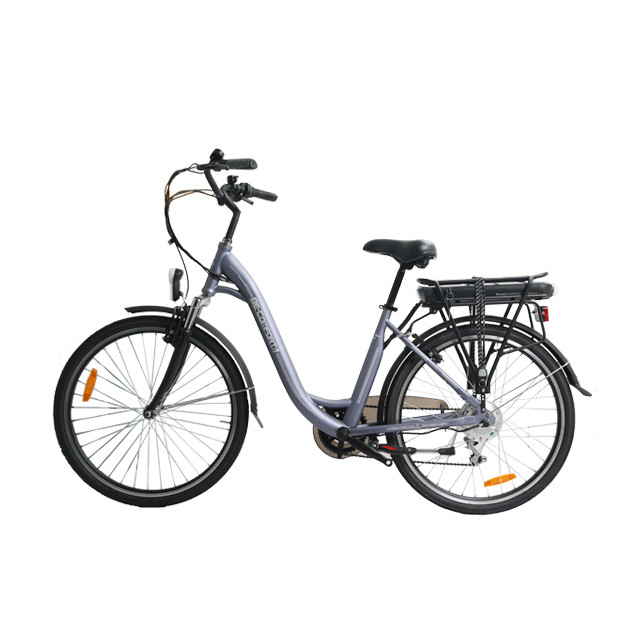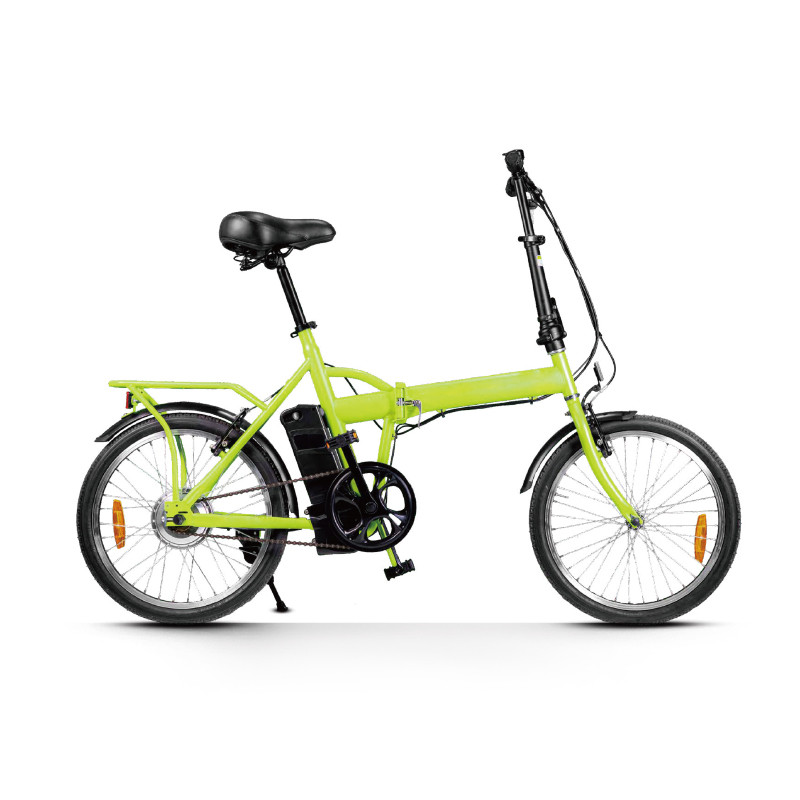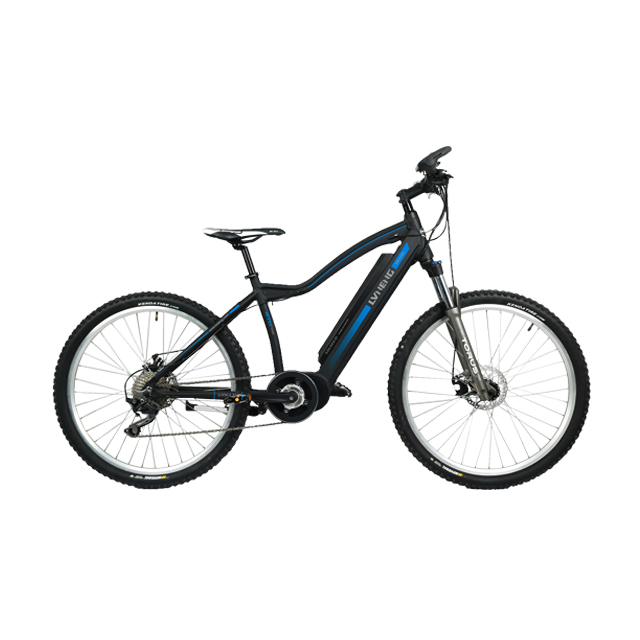-
414 Block B, ZT Times Plaza, Wuhan, Hubei, China
Blog
EU Regulations For Electric Bicycles And Scooters
Summary
The European Union (EU) regulations for electric bicycles and scooters are pivotal in shaping the emerging landscape of micromobility across Europe. As urban populations increasingly seek sustainable and efficient transportation options, e-bikes and e-scooters have surged in popularity, necessitating a coherent regulatory framework to ensure safety, compliance, and environmental responsibility. The notable rise of these vehicles has led to various regulatory measures aimed at harmonizing standards across EU member states, including classifications based on power output, operational characteristics, and safety requirements outlined in regulations like EN 15194 and EN 17128.
The significance of these regulations is underscored by the dual objectives of fostering innovation in urban transport and addressing environmental challenges, including reducing greenhouse gas emissions and traffic congestion. As cities grapple with the influx of shared e-scooter services and private e-bikes, EU regulations seek to create a balanced approach that promotes active mobility while ensuring user safety. Nevertheless, this regulatory landscape is marked by controversies, such as the challenges posed by differing national standards, which can lead to confusion among users and complications for manufacturers attempting to navigate varying compliance requirements.
Regulatory developments have also sparked discussions regarding safety, infrastructure needs, and environmental impact. While the regulations encourage the adoption of electric micromobility, they also highlight potential risks associated with usage, such as accidents and injuries. As e-scooter usage expands, the need for standardized safety measures and public awareness campaigns becomes increasingly vital to foster safe riding practices and mitigate risks.
In response to these challenges, initiatives like the Micro-Mobility for Europe (MMfE) advocate for harmonization of regulations across the EU, emphasizing the importance of integrating e-bikes and e-scooters into urban transport systems to align with broader sustainability goals. The ongoing evolution of EU regulations reflects a dynamic effort to balance the growing demand for electric mobility with the essential principles of safety, environmental stewardship, and user education, ensuring a sustainable future for urban transportation in Europe.
Historical Background
The rise of electric bicycles and scooters in Europe can be traced back to the increasing demand for efficient and sustainable modes of urban transport. By the early 2010s, cities across Europe began witnessing a significant shift in transportation preferences, with bicycles and e-scooters gaining popularity as alternatives to cars. This shift was largely influenced by the need to reduce traffic congestion and greenhouse gas emissions in urban areas.
In 2019, many European countries, including France, Spain, and the UK, began implementing regulations to manage the burgeoning e-scooter market, which was attracting a primarily young demographic due to the convenience and speed offered by these vehicles. This marked a crucial step toward the formal recognition and regulation of e-scooters as legitimate means of transport.
In 2021, South Korea revised its Road Traffic Act to standardize e-scooter usage, reflecting a broader trend of governments attempting to create cohesive frameworks for the management of electric mobility solutions. By May 2023, new regulations came into force in Ireland under the Road Traffic and Roads Act 2023, which defined e-scooters and e-bikes as Powered Personal Transporters (PPTs) and set parameters for their legal use on public roads.
Furthermore, the European Union established the EN 15194 standard, which governs the technical specifications for electric bicycles, requiring compliance with safety and performance criteria. This regulatory framework was further refined with the introduction of new classifications for more powerful e-bikes, necessitating licensing and registration under specific conditions. The harmonization of these regulations across EU member states continues to evolve, as authorities recognize the need for safety measures and guidelines for users of electric mobility devices.

Classification of Electric Bicycles and Scooters
Electric bicycles and scooters are categorized based on their design and operational characteristics, which influence the regulations governing their use in various jurisdictions.
Electric Bicycles
Definitions and Standards
Electric bicycles, commonly referred to as e-bikes, are classified according to their power output and mode of operation. The European Union distinguishes between different types of e-bikes under the EN 15194 standard, which governs Electric Assisted Bicycles (EABs). These are defined as bicycles equipped with a motor that provides assistance up to a continuous rated power of 0.25 kW, with assistance ceasing when the speed reaches 25 km/h or when the rider stops pedaling.
Categories of E-bikes
Pedelecs: These are e-bikes that meet the EU standard EN 15194 and have a motor limited to 250 watts, activated only by pedaling. Pedelecs are allowed to operate where traditional bicycles are permitted.
Speed Pedelecs: These e-bikes have a higher power output of up to 1 kW and can assist riders up to 45 km/h. Speed Pedelecs are subject to different regulations, often classified similarly to mopeds, and may require insurance and registration.
Regional Variations
Regulations surrounding electric bicycles can vary widely among different jurisdictions. In the U.S., for instance, federal law preempts state laws that are more stringent than federal regulations concerning low-speed electric bicycles. This has created a complex regulatory landscape where definitions and legal classifications can differ significantly from one state to another.
Electric Scooters
Types and Classifications
Electric scooters, or e-scooters, are typically light, portable vehicles that have gained popularity for shared micro-mobility services in urban areas. They are often classified based on their weight, motor power, and the mode of operation. For instance, in many European countries, e-scooters must adhere to specific weight and power restrictions, ensuring they fall within the legal definitions established for micromobility devices.
Shared E-scooter Services
The introduction of dockless shared e-scooter services has resulted in varying operational standards and classifications across Europe. E-scooter companies often face challenges due to the patchwork of regulations, which can impact vehicle design, safety features, and operational requirements. The lack of a standardized certification across EU member states leads to inconsistencies in compliance and enforcement.
Environmental Impact and Usage
While e-scooters are generally considered one of the least carbon-intensive forms of urban mobility, their environmental benefits are contingent on replacing car trips rather than displacing other forms of sustainable transport, such as cycling or walking. The efficiency of e-scooters can be affected by the operational practices of shared fleets, which may introduce additional environmental costs compared to privately owned models.
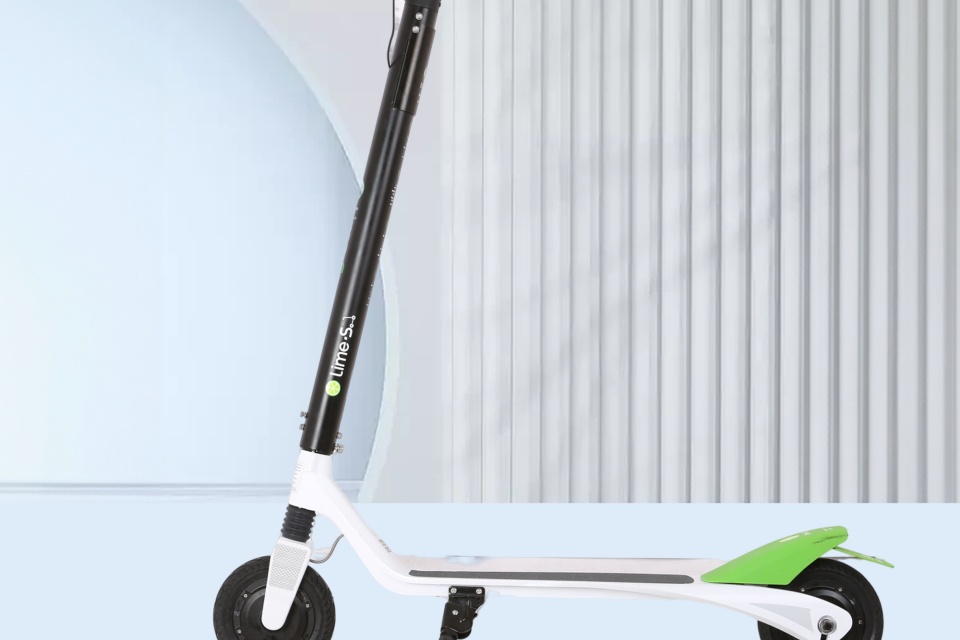
Key Regulations
EN17128 Standard
The EN17128 standard outlines safety requirements and testing methods for Personal Light Electric Vehicles (PLEVs), including e-scooters. It specifies necessary markings and information to minimize injury risks to both riders and third parties when these vehicles are used as intended or in foreseeable misuse situations. Despite its comprehensive content, the standard’s effectiveness has been hindered by its varied application across European Member States, as it lacks linkage to specific European legislation. This has led to national deviations, resulting in a fragmented regulatory environment that complicates operations for micro-mobility operators and creates confusion for users regarding traffic rules.
National Regulations
In response to the evolving landscape of micro-mobility, several countries, such as Ireland, have begun implementing new regulations under national legislation. For instance, the Road Traffic and Roads Act 2023 in Ireland introduces legal and technical parameters for e-scooters and e-bikes, set to commence from May 20, 2023. This regulation aims to provide clarity and enhance road safety for users of light electric vehicles, with enforcement managed by local authorities. The new rules are intended to be part of a broader public information campaign to ensure safe and legal usage of these vehicles on public roads.
EU Harmonisation Efforts
To address the inconsistencies and fragmentation in the regulatory framework, the Micro-Mobility for Europe (MMfE) advocates for the harmonisation of e-scooter regulations across the EU. This includes the potential incorporation of the EN17128 standard into the Machinery Regulation, which would help ensure consistent application across Member States. Additionally, MMfE suggests exploring a European type-approval system structured around light homologation procedures, drawing from successful national frameworks like Germany’s. Such harmonisation is seen as crucial for fostering innovation and supporting the EU’s climate objectives by promoting the adoption of sustainable transport modes.
Future Regulations
Looking ahead, the EU is set to fully enforce updated regulations, such as EN 15194:2017+A1:2023, which governs e-bikes and is expected to impact the broader regulatory landscape for electric vehicles, including e-scooters. This comprehensive revision aims to standardize legal parameters and ensure that all vehicles meet specific safety and performance criteria across the EU. As regulations continue to evolve, the integration of technical and usage parameters will be key in ensuring the safe operation of e-scooters and e-bikes throughout Europe.
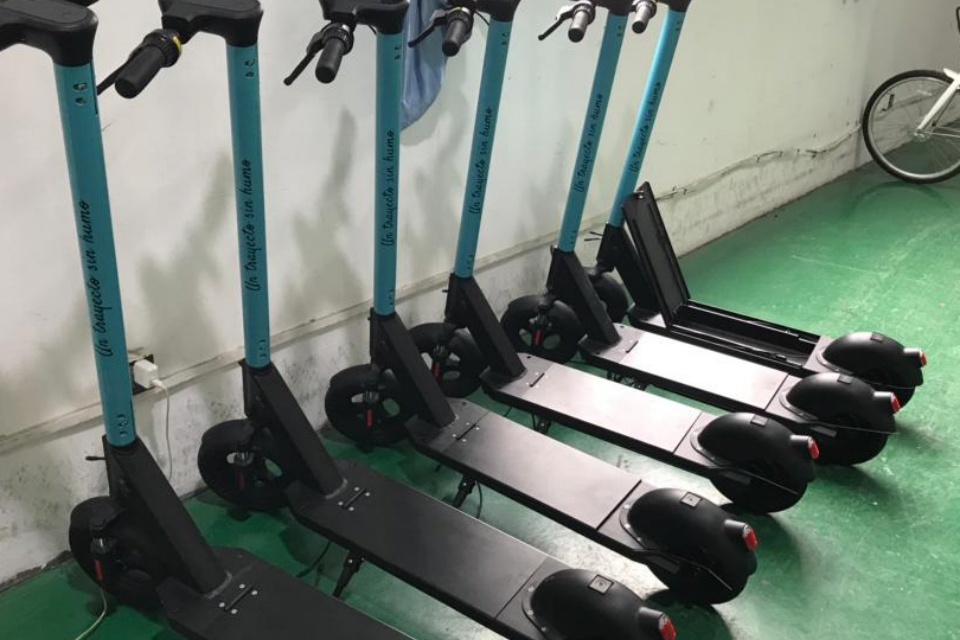
Compliance and Enforcement
Regulatory Framework
Compliance with safety regulations is essential for the manufacture and sale of electric bicycles (e-bikes), e-scooters, and other micromobility devices within the European Economic Area (EEA) and beyond. In the EU, the CE marking is mandatory for these devices, signifying that they meet applicable directives and safety standards. This requirement helps ensure that products are safe for users and compliant with regulatory demands. In the United States, similar compliance is mandated under 16 CFR Part 305, which outlines energy labeling requirements for micromobility devices.
Safety Standards and Testing
Various standards govern the safety and performance of electric micromobility devices. In particular, the UN 38.3 and IEC 62133 regulations provide guidelines for testing lithium-ion batteries, which are commonly used in these devices. Compliance with these standards ensures that batteries are rigorously evaluated for electrical, thermal, and mechanical safety, thereby minimizing risks associated with battery malfunctions and accidents. Furthermore, the U.S. Consumer Product Safety Commission (CPSC) emphasizes the importance of adhering to UL safety standards, including UL 2272 for personal e-mobility devices and UL 2849 for e-bikes, to enhance consumer protection and safety.
Labeling and User Information
Proper labeling and certification are crucial for informing users about safety instructions and guidelines. In the EU, the CE marking serves as a proof of compliance, while in the U.S., obtaining certifications from recognized testing laboratories not only enhances consumer confidence but also assures users of the device’s safety and quality. As new regulations are introduced, ongoing public information campaigns are essential to educate users about their responsibilities and the legal requirements for operating e-scooters and e-bikes safely.
National and Regional Variations
While there is a push for a standardized European system of certification for micro-mobility devices, significant variations in national regulations persist. For instance, certain countries, like the UK and France, have implemented specific compliance measures for e-bikes under EN 15194, while other nations do not enforce these standards uniformly. This divergence complicates the landscape for manufacturers, as they must navigate multiple sets of regulations, impacting market entry and product safety.
Future Outlook
Looking ahead, the EU’s updated Motor Insurance Directive, effective January 2024, requires insurance for light electric vehicles above defined thresholds. This adds a new layer of complexity to the compliance framework, as member states may interpret and apply the directive differently. With the introduction of comprehensive regulations, including the upcoming enforcement of EN 15194:2017+A1:2023 by August 2025, the emphasis on compliance will only intensify, fostering a safer environment for micromobility users across Europe.
Safety Standards
European Union Regulations
In the European Union, micromobility devices, including electric bicycles and scooters, are governed by several safety regulations aimed at ensuring their safe operation and usage. The European standards EN 17128 and EN 15194 are critical, outlining safety requirements for Electrically Power Assisted Cycles (EPACs) and other light electric vehicles. Compliance with these standards ensures that devices meet essential safety criteria related to electrical systems, mechanical design, and braking performance. Additionally, the Machinery Directive (2006/42/EC) and the General Product Safety Directive (2001/95/EC) impose strict safety guidelines covering risk assessment, labeling, and product traceability, which manufacturers must adhere to.
Other pertinent EU regulations include 2014/30/EU concerning electromagnetic compatibility (EMC), 2011/65/EU for the restriction of hazardous substances (RoHS), and 2014/53/EU for radio equipment, which are applicable when devices utilize radio technologies.
United States Regulations
In the United States, the Consumer Product Safety Commission (CPSC) establishes safety standards for micromobility products to protect consumers. One of the key regulations is the ASTM F2641-20 Standard Consumer Safety Specification for E-Scooters, which addresses safety aspects such as construction, labeling, performance requirements, and testing methods. The CPSC also encourages compliance with Underwriters Laboratories (UL) standards, including UL 2849 for electric bicycles and UL 2272 for hoverboards.
Battery Safety
Battery safety is a crucial aspect of the regulations governing electric bicycles and scooters. Both the EU and the USA emphasize the importance of safety standards that ensure the reliable performance and safety of battery systems used in these devices. In Europe, adherence to the appropriate standards is critical to mitigate risks associated with battery malfunctions and failures.
National Variations in Regulations
Regulations for micromobility devices vary significantly among EU member states. For instance, in Sweden, it is illegal to operate e-scooters under conditions that impair the rider’s ability to operate safely, including under the influence of substances that may hinder judgment. In Austria, electric scooters are classified based on their maximum speed and power output, with specific rules for those exceeding certain thresholds, including licensing and helmet requirements.
Environmental Considerations
The adoption of electric bicycles (e-bikes) and electric scooters (e-scooters) is increasingly recognized for its positive impact on the environment. These modes of transport contribute to a significant reduction in greenhouse gas emissions, with studies indicating that a 5% increase in trips made by bicycles and electric micro-mobility devices instead of cars could result in a 7% reduction in CO2 emissions globally. Moreover, e-bikes can decrease energy consumption by up to 93% and atmospheric pollution by 95% compared to traditional vehicles.
Infrastructure Impact
The expansion of electric bicycles and scooters (e-scooters) in urban areas has a significant impact on infrastructure planning and management. With the rise in active mobility users and the proliferation of micro-mobility devices, cities face the challenge of enhancing their transport systems to accommodate these new modes of transport effectively.
Urban Transport Integration
To promote the use of walking, cycling, and micro-mobility, the European Union has developed comprehensive guidelines aimed at improving the infrastructure’s quality, safety, and accessibility. These measures focus on integrating these modes into existing transport systems and traffic management protocols, thereby facilitating a seamless transition between various transport methods. The integration involves designing cycling and walking infrastructure network plans and establishing standards in design guidance documents that connect these modes with public transport systems.
Infrastructure Requirements
Improving infrastructure necessitates addressing specific requirements for the safe integration of e-bikes and e-scooters into urban traffic systems. This includes exploring the conditions under which these vehicles can be effectively managed through traffic light systems and traffic management technologies. Furthermore, cities are encouraged to establish digitally controlled parking zones to manage e-scooter parking, thereby mitigating street clutter and ensuring the safety of vulnerable road users.
Parking and Space Allocation
The introduction of e-scooters has led to discussions about space allocation in public areas. E-scooters can contribute to road congestion, and without proper management, they may obstruct pathways, affecting pedestrians and other vulnerable users. Cities are increasingly reallocating car parking spaces to accommodate e-scooter parking and establishing mobility hubs that integrate various transport options, such as e-scooters, bicycles, and car-sharing stations linked to public transport. This reallocation is crucial for improving the overall liveability of urban environments.
Environmental Considerations
The shift towards electric micro-mobility is expected to significantly reduce urban emissions. Projects like the LIFE2M initiative aim to increase the adoption of micromobility vehicles across European cities, with anticipated reductions in energy consumption, atmospheric pollution, and CO2 emissions. This shift aligns with EU policies targeting climate neutrality and sustainable urban transport systems.
Safety and Regulation
While the infrastructure for e-bikes and e-scooters continues to develop, safety remains a paramount concern. Although the use of helmets is not mandated in some jurisdictions, they are strongly recommended to mitigate the risk of injury among riders. Moreover, local authorities are empowered to set regulations regarding the maximum number of e-scooters allowed in certain areas, further emphasizing the need for comprehensive planning and management to ensure safe and efficient use of public spaces.
Future Developments
Legislative Framework and Coordination
Future developments in the regulation of electric bicycles (e-bikes) and electric scooters (e-scooters) are expected to be shaped significantly by evolving legislative frameworks at both the European Union (EU) and national levels. Notably, the European Climate Law, established under Regulation (EU) 2021/1119, aims for climate neutrality and the reduction of greenhouse gas emissions, with active mobility (walking and cycling) playing a vital role in achieving these objectives. As cities work towards enhancing their climate strategies, there is an increasing emphasis on integrating walking, cycling, and micro-mobility into multimodal transport networks.
Adoption of Smart Technologies
The integration of smart technologies is anticipated to facilitate the effective management of traffic and enhance the safety and usability of e-bikes and e-scooters. Ongoing initiatives will explore conditions for incorporating these vehicles into traffic management systems, including traffic light synchronization to improve their integration within urban mobility frameworks. Additionally, the use of Cooperative Intelligent Transport Systems (C-ITS) will be expanded to encompass e-bikes and micro-mobility devices, thereby increasing their modal share and safety in urban settings.
Enhancements in Infrastructure
To accommodate the growing popularity of e-bikes and e-scooters, improvements to infrastructure are necessary. This includes the development of cycling and walking networks that connect seamlessly with public transport systems. Expected outcomes include a 30% increase in daily trips made by foot or by bike in follower cities as they adopt policies promoting active mobility. As part of this evolution, local, regional, and national active mobility policies will be established, contributing to the overall framework that supports the growth of electric mobility across Europe.
Battery Regulation and Sustainability
The forthcoming EU Battery Regulation, aimed at promoting sustainable battery practices throughout their lifecycle, is particularly relevant for the electric mobility sector. This regulation is essential for ensuring the safety and sustainability of batteries used in shared micro-mobility applications, aligning with the broader goals of decarbonization in transport. Stakeholders within the micro-mobility industry have raised concerns about current legislative proposals, advocating for a coherent framework that reflects the industry’s evolving nature while supporting EU sustainability targets.
Public Awareness and Compliance
As new regulations come into effect, such as those established under the Road Traffic and Roads Act 2023 in Ireland, public information campaigns will be crucial to educate users about safe practices when using e-scooters and e-bikes. The enforcement of these regulations by local authorities is expected to enhance safety and compliance among users, further encouraging the adoption of these modes of transport.
Cited Works
The discussion surrounding EU regulations for electric bicycles and scooters encompasses a wide range of studies and publications that highlight their environmental impacts, legislative progress, and usage patterns. Research conducted by Hawkins et al. (2012) reviews the environmental impacts of hybrid and electric vehicles, providing foundational insights relevant to the discourse on electric micromobility.
The Federal Statistics Office of Germany (2021) reported that in 2020, 68% of employed individuals commuted by car, underscoring the importance of alternative transportation modes like electric bicycles and scooters. A comparative study by Moreau et al. (2020) evaluates dockless e-scooters and their potential as green mobility solutions, indicating their role in reducing reliance on traditional vehicles.
Legislative developments have also been documented, such as the New York State Senate’s passing of Bill S3997 in 2015, which clarified the definition of electric-assisted bicycles. Despite these advancements, other initiatives, like a legalization bill in 2019, faced gubernatorial veto.
Additionally, the European Union has introduced various regulatory frameworks aimed at enhancing sustainable urban mobility. These include the Sustainable and Smart Mobility Strategy (COM(2020) 789 final) and the European Green Deal (COM(2019) 640 final), which collectively emphasize the need for innovative transportation solutions within urban environments.
Recent advancements in safety standards are also pertinent, with the U.S. Consumer Product Safety Commission highlighting the importance of compliance with UL safety standards for micromobility devices. As these regulations evolve, ongoing research continues to assess the socio-economic impacts and safety considerations of shared e-scooter usage, particularly among specific demographics like university students in Braga.
This body of work reflects the multifaceted approach required to effectively address the challenges and opportunities associated with electric bicycles and scooters in the context of urban mobility and environmental sustainability.
Further Reading
Research on E-Scooter Usage
Several studies explore the determinants of shared e-scooter usage, particularly among university students in Braga, Portugal. These investigations highlight that an increase in cycle lanes correlates with heightened e-scooter adoption. The research also expands beyond student populations to analyze broader community trends and suggests policy measures to enhance e-scooter utilization in urban settings.
Environmental Impact of E-Mobility
Life Cycle Assessments (LCA) provide insights into the environmental performance of electric two-wheelers. Studies indicate that electric bikes and scooters present cleaner urban mobility solutions compared to traditional vehicles. Research shows that integrating light electric vehicles can significantly contribute to city decarbonization goals, with potential for a substantial reduction in carbon emissions by 2030.
Safety and Compliance
As the popularity of electric personal transportation devices rises, ensuring compliance with safety regulations becomes crucial. Regulations classify these devices based on speed and power, guiding manufacturers and users on safety standards. Enhanced safety measures, including insurance coverage for micro-mobility users, reflect a growing awareness of associated risks.
Market Trends and User Demographics
Market analyses reveal that younger demographics increasingly prefer sustainable transportation methods, opting for electric scooters and bikes over cars. This shift not only influences urban planning and policy but also presents challenges and opportunities for infrastructure development, particularly in accommodating the needs of e-scooter users.
Safety Evaluations and Standards
For manufacturers, adherence to safety standards like ANSI/CAN/UL 2272 is essential for ensuring the safe operation of e-mobility devices. Testing and certification processes assess various components, including electrical and fire safety, contributing to consumer protection in the expanding e-transportation market.




